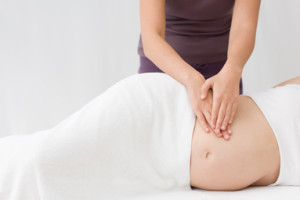 Pregnancy Massage: Stress Relief for Mothers-To-Be
Pregnancy Massage: Stress Relief for Mothers-To-Be
Massage therapy has long been recognized as an effective means of stress relief. During pregnancy, that benefit does double duty, relaxing the mother and reducing the flow of stress hormones to the baby. Most women find that they sleep much better after a massage. They feel more spacious and fluid in their bodies, able to move with greater ease and comfort.
A pregnant woman’s blood volume increases as much as 40% (even more with twins or triplets). Massage therapy supports the work of the heart, aiding circulation of blood as well as other body fluids. Especially for women who must sit for long periods of time during the day, leg and pelvic massage help reduce the likelihood of varicose veins and swollen ankles.
Research has shown that women who receive massage during pregnancy engage in more nurturing touch with their infants. The experience of being touched with respect and empathy taps into deep capacities for connection and healthy interdependence. Massage therapy honors the personhood and the modesty of the pregnant woman, which is a rare experience in prenatal care for many women.
When making an appointment for massage therapy, it is important for a pregnant woman to inform the therapist of her stage of pregnancy as well as any special concerns or complications that have arisen during the pregnancy. Not all massage therapists have received training in pregnancy massage, and not all are comfortable working with pregnant women. It is not unreasonable to ask about experience and/or credentials to ensure that the therapist is knowledgeable about the unique precautions and adaptations that are necessary for pregnant clients.
Pregnancy massage is usually done in a sidelying position with plenty of pillows or cushions for support. (Special massage tables exist that enable a pregnant woman to lie on her stomach, but leading experts in the profession do not recommend such prone positioning because of the stress it places on vulnerable circulation areas, on the uterine ligaments, and on the uterus itself.) The massage usually addresses the neck, the arms/hands, the back, the pelvis, and the legs/feet. The woman’s body is carefully draped with a sheet and/or towel so that private areas are never exposed during the massage. Most therapists are also willing to adapt their routine to accommodate any special discomfort with nudity or sensitive areas of the body.
Prenatal massage is much more than a “treat” that women deserve once or twice during their pregnancies. It is a form of health care that impacts both the temporary challenges of pregnancy and the lifelong experience of healthy parenting.
If you or anyone you know suffers from chronic pain and would like to attain a better quality of life, those in the Inland Empire region, please contact me today to book a session.
